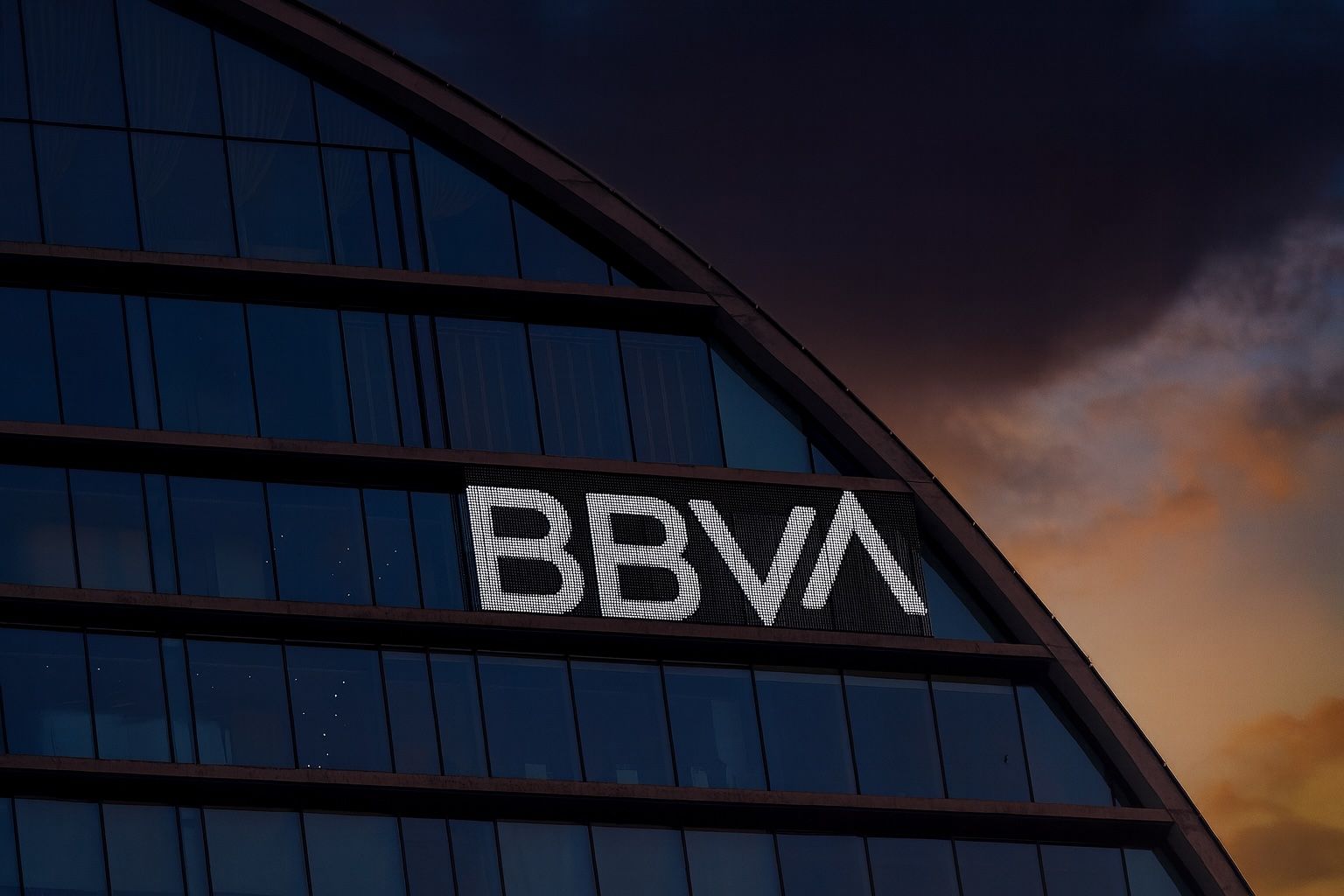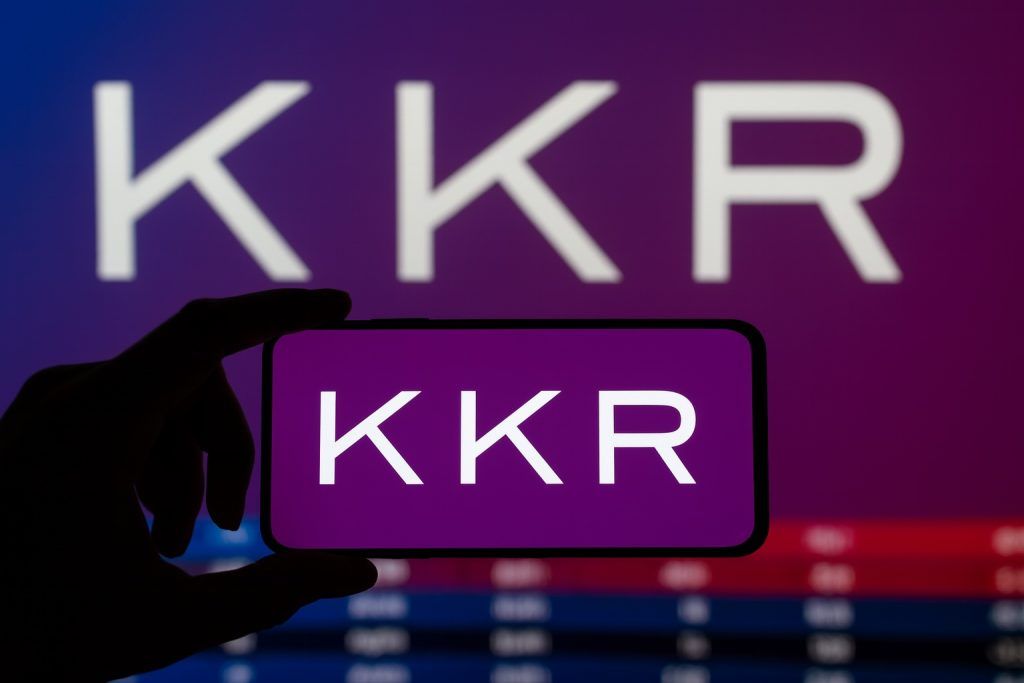- Share Price & Recent Moves: Banco Bilbao Vizcaya Argentaria (BBVA) stock is trading around €15.72 in Madrid (≈$19.48 as ADR) as of October 16, 2025 [1] [2]. After a mid-week uptick, shares dipped slightly in the last two sessions. Notably, U.S.-listed BBVA ADRs surged ~6–7% intraday after major news on Oct. 16 [3], with trading volume spiking well above average [4].
- Takeover Bid Fizzles: BBVA’s €16 billion hostile bid for rival Sabadell has failed, with only ~25.5% of Sabadell’s shares tendered – below even the lowered 30% threshold [5] [6]. The collapse ends an 18-month saga and was seen as a setback for BBVA’s expansion plans, but investors reacted positively – BBVA’s stock jumped on relief that the bank won’t be overpaying or diluting shares [7].
- Credit Upgrades & Financial Strength: All three major rating agencies upgraded BBVA in recent weeks. Fitch Ratings raised BBVA to ‘A-’ (stable outlook) on Oct. 7, citing a stronger Spanish economy and BBVA’s “record of strong earnings generation” across diverse markets [8] [9]. S&P and Moody’s also upped their ratings earlier, reflecting BBVA’s resilience and capital strength. The bank posted a record €5.45 billion profit in H1 2025 (up 9% YoY) with stellar ROTE above 20%, underscoring robust fundamentals [10] [11].
- Analyst Sentiment: Wall Street is bullish on BBVA. Zacks Investment Research upgraded the stock to “Strong Buy” (its top rank) this week, pointing to rising earnings estimates and forecasting around $2.03 EPS for 2025 (flat YoY) [12]. In fact, all 7 analysts tracked by TipRanks rate BBVA Buy, with an average 12-month price target ~€17.2 (about 6% upside from current levels) [13]. The consensus view is that BBVA’s diversified profit engines (Spain, Mexico, Türkiye, etc.) will continue to drive growth.
- Investor Sentiment & Dividends:Investor sentiment is largely positive. Short interest is negligible (≪0.1% of float) [14], and the bank’s valuation looks attractive at roughly 9–10× earnings, well below industry averages [15]. BBVA also rewards shareholders with a healthy dividend (yielding ~4% [16]) and just announced a record interim dividend of €0.32 per share to be paid in November [17] [18]. Following the failed acquisition, BBVA is immediately resuming buybacks (a €1 billion repurchase kicks off Oct. 31) and plans additional capital returns, signaling confidence in its outlook [19] [20].
- Broader Banking Trends: BBVA’s fortunes mirror broader European banking trends. Banks are enjoying wider interest margins in the high-rate environment, boosting net interest income [21]. Fitch notes BBVA’s earnings are “resilient… across multiple economic and interest-rate cycles” [22]. However, consolidation in the sector remains challenging – BBVA’s failed Sabadell bid (amid political pushback and regulatory hurdles [23]) shows the difficulty of big bank mergers in Europe. Instead, BBVA is focusing on organic growth and innovation; for instance, it plans to launch a digital bank in Germany, expanding its footprint via technology [24].
BBVA Stock on the Rise – Recent Performance
BBVA’s stock has been on a volatile upswing, with investors closely tracking every development. As of October 16, BBVA shares trade around €15.72 on the Spanish exchange, roughly 0.4% lower on the day [25]. This slight dip followed a 1.3% drop on Oct. 15 [26], which erased gains from earlier in the week. Even so, the stock remains near multi-year highs after a strong rally in recent months. The bank’s U.S.-listed ADR (NYSE: BBVA) closed Oct. 16 at $19.48, leaping about 6.7% from the prior day [27]. That dramatic one-day jump in New York came as news broke of BBVA’s scuttled acquisition plan – a development traders cheered as removing uncertainty.
Trading volumes have surged, reflecting heightened investor interest. On Oct. 16, nearly 9 million BBVA shares changed hands in Madrid – about double the typical daily volume [28]. In New York, over 6 million ADRs traded, many times the average [29]. Such volume spikes indicate active institutional trading and momentum investors piling in. Market watchers say the stock’s recent pullback (down ~5% in the past ten days [30]) may have presented a buying opportunity. Indeed, technical analysts note BBVA remains in a wide upward channel, and even with recent profit-taking, it’s in the lower band of that rising trend – historically a favorable entry zone [31]. Short-term volatility is expected, but the overall uptrend appears intact. Some models project BBVA could rise ~20% over the next quarter if it continues rebounding, potentially trading in the low-€20s range in the coming months [32]. Of course, realizing that upside will depend on upcoming earnings and macroeconomic conditions.
Sabadell Takeover Saga: BBVA’s Bid Fails, Investors Breathe Sigh of Relief
One of the biggest recent catalysts for BBVA’s stock was the climax of its protracted takeover attempt of Banco Sabadell, Spain’s fifth-largest bank. Late on Oct. 16, BBVA announced the bid’s failure: only 25.5% of Sabadell’s shareholders tendered into the offer, falling short of even the minimum 30% acceptance condition that BBVA had set [33] [34]. (Originally, BBVA sought over 50%, but it had the option to waive down to 30% – an option rendered moot by the low turnout.) This marks a definitive end to an 18-month saga that saw BBVA first approach Sabadell in early 2024 and launch a hostile bid by mid-2024 [35]. The attempted €16 billion merger became one of Spain’s most bitter banking battles in years, drawing political resistance and intense regulatory scrutiny [36].
For BBVA’s management – notably Chairman Carlos Torres Vila, the architect of the offer – the outcome is a blow to expansion ambitions [37]. The deal was meant to catapult BBVA’s domestic market share and create one of Europe’s largest lenders (with ~€1 trillion in assets) [38]. However, opposition was fierce: regulators and government officials warned about layoffs and competition concerns, even imposing conditions that would have restricted a full integration for three years had the deal gone through [39]. In the end, Sabadell’s investors weren’t enticed enough – BBVA’s sweetened all-share offer in September amounted to only a 1.6% premium over market price [40], which Sabadell’s board deemed inadequate. The board had signaled reluctance, and major shareholders like Mexican billionaire David Martínez (Sabadell’s largest investor) voiced that BBVA’s price was too low [41].
Market reaction to the failed bid was strikingly positive for BBVA’s stock. Upon confirmation that the takeover would not proceed, BBVA shares rallied sharply. In U.S. trading, the ADR spiked about 7% on Oct. 16 following the news [42], as investors evidently welcomed BBVA’s discipline in avoiding an overpayment. Many analysts saw the bid’s collapse as removing a cloud of uncertainty over BBVA’s future. “This outcome relieves concerns about integration risks and capital strain,” noted one market strategist. Indeed, had BBVA succeeded, it would have issued billions in new shares to fund the deal – a prospect that some BBVA shareholders had been lukewarm about. With the deal off, BBVA can refocus on its core businesses and growth in existing markets rather than digesting a major merger.
BBVA’s top brass is putting on a confident face. “At BBVA we look to the future with confidence and enthusiasm,” Chairman Torres Vila said in a video message to investors, emphasizing that the bank is “at its best” and has a clear plan to keep growing organically [43]. Importantly, BBVA wasted no time in pivoting to shareholder rewards now that the Sabadell quest is over. Management unanimously approved an acceleration of its capital return plans: starting October 31, BBVA will resume share buybacks, snapping up about €1 billion worth of its shares that had been on hold during the bid process [44] [45]. And on November 7, the bank will pay out its largest-ever interim dividend – €0.32 per share (roughly $0.38), a 10% increase from last year [46] [47]. This one-time hefty dividend (totaling €1.8 billion) is a direct result of unused capital that had been earmarked for the Sabadell acquisition now being returned to shareholders [48] [49].
The failed takeover also highlights a broader industry theme: European banking consolidation is tricky. While scale is increasingly important, hostile takeovers face cultural and political barriers on top of shareholder skepticism. BBVA’s experience may temper other big banks’ M&A ambitions, at least in the near term. Instead, BBVA and peers might channel excess capital into buybacks, dividends, or invest in technology and partnerships. In BBVA’s case, the bank has been expanding digitally – for example, it plans to launch a digital bank in Germany, entering that market with a branchless strategy rather than via acquisition [50]. This approach could allow growth abroad with lower risk. For investors, BBVA’s disciplined retreat from the Sabadell deal – coupled with immediate tangible rewards in the form of buybacks and dividends – appears to be a net positive.
Financial Health and Ratings: BBVA Flexes Fundamentals
BBVA’s solid stock performance is underpinned by strong financial fundamentals, which have garnered praise from ratings agencies and analysts alike. The bank’s latest results show healthy growth and profitability. In the first half of 2025, BBVA posted a record net profit of €5.45 billion, up 9% year-over-year (and +31% in constant currency terms) [51]. This was driven by higher lending and activity in core markets like Spain and Mexico, as well as widening margins thanks to rising interest rates. BBVA’s net interest income (the difference between what it earns on loans and pays on deposits) jumped 10% YoY to €12.6 billion in H1 [52] – a testament to its ability to capitalize on the higher rate environment. Fee income also surged 18%, reflecting robust customer activity in payments, asset management, and other services [53].
Crucially, BBVA is delivering these earnings with excellent efficiency and returns. Its return on tangible equity (ROTE) exceeded 20% in the first half [54], placing BBVA among the most profitable banks in Europe. The bank’s leadership touts that BBVA is “living one of the best moments in its history” and is “one of the most profitable banks in Europe, with truly leading franchises… and excellent prospects,” as CEO Onur Genç recently said [55]. This confidence is reflected in BBVA’s ambitious 2025–2028 plan: management targets a sustained ~22% ROTE over the next four years, an efficiency ratio around 35%, and roughly €48 billion in cumulative profit through 2028 [56]. They also aim to grow the tangible book value per share (plus dividends) by ~15% annually [57] – an indicator of strong value creation for shareholders.
Such fundamentals have not gone unnoticed by credit rating agencies. In the past month, all three major agencies (Fitch, Moody’s, and S&P) have upgraded BBVA’s credit ratings, signaling increased confidence in the bank’s stability. Most recently, on October 7, Fitch Ratings upgraded BBVA one notch to an ‘A-’ long-term rating (from BBB+) with a stable outlook [58]. Fitch explicitly cited improved macro conditions in Spain and BBVA’s own performance: “The upgrade reflects a combination of Fitch’s improved assessment of the Spanish operating environment … and BBVA’s record of strong earnings generation, underpinned by income diversification by geography,” the agency noted [59]. In other words, Spain’s economy – buoyed by higher interest rates and a post-pandemic rebound – provides a solid backdrop, and BBVA’s global footprint (Spain’s #2 bank with major operations in Mexico, Turkey, and South America) gives it multiple growth levers. Fitch pointed out BBVA’s “resilient earnings across multiple economic and interest-rate cycles”, supported by its strong retail franchises and broad deposit base [60]. It also praised BBVA’s decentralized model of largely self-funded local subsidiaries, which adds stability [61]. Notably, Fitch mentioned that if BBVA had succeeded in acquiring Sabadell, it “would strengthen its footprint in Spain, closing the gap with the market leader”, though that scenario is now off the table [62].
Earlier, Moody’s (on Oct. 3) and S&P Global (on Sept. 16) also upgraded BBVA. S&P lifted BBVA’s issuer credit rating from A to A+ (stable outlook), citing the bank’s strong profitability and capital, and in part following an upgrade of Spain’s sovereign rating [63]. Moody’s bumped BBVA’s senior debt to A2 from A3, noting the bank’s improved fundamentals and placing the outlook under review for further upgrade [64]. In sum, BBVA now enjoys some of its highest credit ratings in over a decade, which should lower its funding costs and is a vote of confidence in its financial footing.
From an investor’s perspective, BBVA’s fundamental metrics make a case that the stock is underpriced relative to its peers. The shares trade around 9–10 times trailing earnings, a price-to-earnings (P/E) ratio of ~10.3 [65]. This is a steep discount both to the broad market (the average P/E for major indices is much higher) and to the financial sector – the finance sector’s average P/E is about 29, making BBVA look cheap in comparison [66]. Even on a price-to-book basis, BBVA’s P/B of ~1.6 is reasonable and suggests the stock isn’t overvalued given the quality of its assets [67]. Meanwhile, BBVA offers a generous dividend yield. Based on annualized payouts, the yield is roughly 4% (placing BBVA in the top quartile of dividend payers) [68]. The payout ratio is around 30-40% of earnings, which is sustainable and leaves room for growth [69]. In fact, BBVA has been steadily increasing dividends and executing share buybacks, which not only return cash to investors but also boost per-share earnings by reducing share count. The planned €1B buyback and the €0.32 interim dividend (to be paid Nov. 7) underscore management’s commitment to shareholder remuneration now that the Sabadell deal is off the table [70] [71].
Analyst Forecasts and Expert Commentary
Equity analysts largely echo a positive outlook for BBVA. In mid-October, Zacks Equity Research elevated BBVA to a Zacks Rank #1 (Strong Buy), their highest rating category [72] [73]. The upgrade was driven by upward revisions to earnings forecasts. Over the past 90 days, analysts have raised their consensus earnings estimate for BBVA by about 9%, reflecting optimism about the bank’s profit trajectory [74]. Zacks notes that BBVA is now expected to earn approximately $2.03 per share for full-year 2025, essentially flat versus 2024 but at a high absolute level [75]. The stagnation at a high EPS suggests that 2024’s bumper results (boosted by rising rates) are seen as sustainable into 2025. “Rising earnings estimates and a strong earnings outlook” are powerful stock drivers, Zacks commented, arguing that BBVA’s improving fundamentals could propel the stock higher in the near term [76] [77]. The Zacks Rank upgrade is notable because historically, Zacks #1 Rank stocks have strongly outperformed the market on average.
Other analyst surveys show a consensus Buy rating on BBVA. According to TipRanks, which aggregates analyst views, 7 out of 7 recent analyst ratings are Buys, with zero Holds or Sells [78]. The average 12-month price target is about €17.24 per share [79]. That implies a modest ~6% upside from current trading levels around €16.2 [80]. Price targets among analysts range from roughly €15 on the low end to €18.5 on the high end [81] – so even the most conservative published target sees BBVA stock holding firm near current prices, while the most bullish foresee ~15% upside. In USD terms, a €17.24 target would equate to around $19–$20 for the ADR, in line with where the U.S. shares spiked to after the takeover news. It’s worth noting that many analysts likely set these targets before the Sabadell outcome; some may update their models to account for BBVA’s standalone prospects (which could mean higher earnings per share due to the buybacks, but also perhaps slightly slower growth without Sabadell). On balance, the sentiment is clearly optimistic – BBVA is viewed as one of the stronger plays in European banking.
Expert commentary underscores a few key themes about BBVA. First, geographic diversification is a strength. Unlike purely domestic Spanish banks, BBVA derives substantial profits from abroad – especially Mexico (its largest market for net income) and Turkey (through its stake in Garanti BBVA). This has historically provided growth when one region slows. Fitch pointed out that BBVA’s “strong franchises in Mexico, Türkiye, and South America” support its business and funding profile, helping stabilize earnings [82]. That diversification also positions BBVA to benefit from higher growth emerging markets alongside mature European markets. Second, BBVA’s technology and digital leadership get positive nods. The bank has been a pioneer in digital banking and fintech investments, which helped it gain efficiency and appeal to younger customers. BBVA’s plan to open a digital bank in Germany is seen as a savvy way to enter a new market without large acquisition costs [83]. It leverages BBVA’s digital banking platform and learnings from its successful online bank launches in other countries. If executed well, this could incrementally boost growth and showcase BBVA’s innovative edge.
Finally, analysts caution about a few risks. One is the macroeconomic outlook: If Europe slips toward recession or if Mexico/Turkey face economic turbulence, banks like BBVA could see loan growth slow or credit costs rise. BBVA’s Turkish exposure, in particular, introduces some volatility due to currency and inflation swings – though BBVA has navigated that reasonably so far, and Turkey’s policy shifts in 2024–2025 have been toward more orthodox economics which markets like. Another factor is interest rate peaks; banks have enjoyed a profit windfall from rising rates, but if central banks start cutting rates in late 2025 or 2026, net interest margins could compress. For now, the European Central Bank held rates steady at its recent meeting (after a series of hikes) and signaled no imminent cuts [84], meaning banks should continue to benefit from higher-for-longer rates in the coming quarters. Additionally, regulatory capital demands are rising – EU regulators are phasing in Basel III rules that will require higher capital buffers by 2025–2026. BBVA will need to keep boosting retained earnings or moderate payout growth to meet these, but its current capital ratios are adequate and Fitch noted capital is moving toward the upper end of targets [85].
Outlook: Cautious Optimism for 2026 and Beyond
Looking ahead, BBVA enters late 2025 with solid momentum and a clarified strategic path. With the Sabadell chapter closed, the bank will focus on organic growth, fintech innovation, and returning value to shareholders. The immediate outlook for earnings is positive: analysts expect BBVA to post strong full-year 2025 results, likely on par with 2024’s record profits [86]. High interest rates in Europe and Mexico should continue to bolster interest income through year-end, and asset quality remains healthy so far (no red flags in loan defaults yet, though this remains an area to watch as borrowing costs bite). BBVA’s management affirmed its 2025-2028 goals which include aggressive profitability and distribution targets [87] – hitting these would make BBVA one of the standout performers in European banking.
In terms of stock performance, BBVA’s valuation is still appealing for value-focused investors. At ~10x earnings and with a 4% dividend yield, the stock offers a blend of income and growth at a reasonable price [88] [89]. If the bank delivers on consensus EPS (~$2+ per share), the low P/E suggests room for multiple expansion – i.e. the stock price could rise faster than earnings if investor sentiment on European banks improves. A re-rating toward even a 12x P/E would imply a significantly higher share price. The main catalysts that could drive such re-rating in 2026 include: continued earnings beats (e.g., from better-than-expected loan growth or cost control), further interest rate tailwinds, or capital actions beyond what’s announced (BBVA has hinted at more buybacks pending ECB approval [90] [91], which would support the stock). Additionally, any reduction in economic uncertainty – for example, Spain avoiding recession or Mexico sustaining solid GDP growth – would boost confidence in BBVA’s cross-market strategy.
That said, investors will keep an eye on external factors. Global banking sentiment in 2025 has been mixed, with concerns about slowing growth in Europe and lingering inflation. BBVA’s stock, like many banks, could be sensitive to any signs of central banks aggressively easing (which might squeeze margins) or conversely any financial market turbulence. The good news is BBVA’s low valuation and high capitalization provide a cushion. It also helps that BBVA faces the future with top-tier credit ratings after the recent upgrades [92] – a recognition of its stability that should reassure large investors and counterparties.
All things considered, the outlook for BBVA stock appears bright yet balanced by caution. The bank has navigated the post-pandemic era exceptionally well, emerging with higher profits, stronger ratings, and a clear strategy. It leads in key growth areas (digital banking, emerging market exposure) while maintaining prudent risk management. With the Sabadell overhang gone, BBVA can deploy its capital to benefit existing shareholders directly. Analysts see modest upside in the next year [93], but if execution stays strong, BBVA could surprise to the upside. Long-term investors may appreciate the combination of steady dividends, buyback-fueled EPS growth, and optionality in new markets (like its German digital venture or potential fintech partnerships). As one industry expert put it, “BBVA now has the best of both worlds: robust home-market operations and global diversification, without the distraction of a major merger. It’s positioned to thrive on its own terms.”
Bottom Line: BBVA enters late 2025 as a resilient banking leader with momentum on its side. Short-term traders have taken note of recent catalysts – the stock’s pop after the failed takeover underscores that sometimes the best deal is the one you don’t do. Longer-term, BBVA’s fundamental strength and strategic clarity offer confidence. Barring unforeseen macro shocks, the bank is on track to continue delivering solid returns, making its stock a noteworthy pick in the European banking sector for those with a constructive view on the industry’s future. Investors will be watching the upcoming quarterly results and any new guidance closely, but for now, BBVA’s trajectory looks steady and promising.
Sources: Recent trading data from Investing.com [94] [95]; Reuters news on Sabadell bid outcome [96] [97]; BBVA official statements and financial reports [98] [99]; Fitch Ratings commentary [100]; Zacks/Nasdaq analyst report [101]; TipRanks consensus data [102]; MarketBeat statistics [103] [104]; TS2.tech industry news [105].
References
1. www.investing.com, 2. www.investing.com, 3. www.reuters.com, 4. www.investing.com, 5. www.reuters.com, 6. www.reuters.com, 7. www.reuters.com, 8. www.bbva.com, 9. www.bbva.com, 10. www.bbva.com, 11. www.bbva.com, 12. www.nasdaq.com, 13. www.tipranks.com, 14. www.marketbeat.com, 15. www.marketbeat.com, 16. www.marketbeat.com, 17. www.bbva.com, 18. www.bbva.com, 19. www.bbva.com, 20. www.bbva.com, 21. www.bbva.com, 22. www.bbva.com, 23. www.reuters.com, 24. ts2.tech, 25. www.investing.com, 26. www.investing.com, 27. www.investing.com, 28. www.investing.com, 29. www.investing.com, 30. stockinvest.us, 31. stockinvest.us, 32. stockinvest.us, 33. www.reuters.com, 34. www.reuters.com, 35. www.reuters.com, 36. www.reuters.com, 37. www.reuters.com, 38. www.reuters.com, 39. www.reuters.com, 40. www.reuters.com, 41. www.reuters.com, 42. www.reuters.com, 43. www.bbva.com, 44. www.bbva.com, 45. www.bbva.com, 46. www.reuters.com, 47. www.bbva.com, 48. www.bbva.com, 49. www.bbva.com, 50. ts2.tech, 51. www.bbva.com, 52. www.bbva.com, 53. www.bbva.com, 54. www.bbva.com, 55. www.bbva.com, 56. www.bbva.com, 57. www.bbva.com, 58. www.bbva.com, 59. www.bbva.com, 60. www.bbva.com, 61. www.bbva.com, 62. www.bbva.com, 63. www.spglobal.com, 64. www.londonstockexchange.com, 65. www.marketbeat.com, 66. www.marketbeat.com, 67. www.marketbeat.com, 68. www.marketbeat.com, 69. www.marketbeat.com, 70. www.bbva.com, 71. www.bbva.com, 72. www.nasdaq.com, 73. www.nasdaq.com, 74. www.nasdaq.com, 75. www.nasdaq.com, 76. www.nasdaq.com, 77. www.nasdaq.com, 78. www.tipranks.com, 79. www.tipranks.com, 80. www.tipranks.com, 81. www.tipranks.com, 82. www.bbva.com, 83. ts2.tech, 84. www.bbva.com, 85. www.bbva.com, 86. www.nasdaq.com, 87. www.bbva.com, 88. www.marketbeat.com, 89. www.marketbeat.com, 90. www.bbva.com, 91. www.bbva.com, 92. www.bbva.com, 93. www.tipranks.com, 94. www.investing.com, 95. www.investing.com, 96. www.reuters.com, 97. www.reuters.com, 98. www.bbva.com, 99. www.bbva.com, 100. www.bbva.com, 101. www.nasdaq.com, 102. www.tipranks.com, 103. www.marketbeat.com, 104. www.marketbeat.com, 105. ts2.tech







